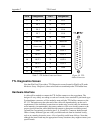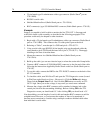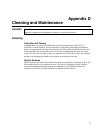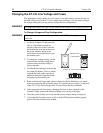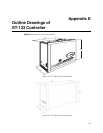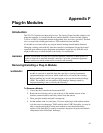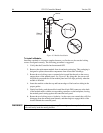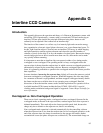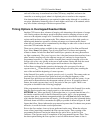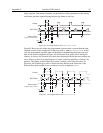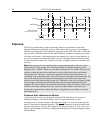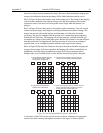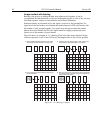
85
Appendix G
Interline CCD Cameras
Introduction
This appendix discusses the operation and theory of a Princeton Instruments camera with
an interline CCD. Operationally, a camera with a conventional CCD and one having an
interline CCD are quite similar, the principal difference being that a shutter would
ordinarily not be required if the camera has an interline chip.
The function of the camera is to collect very low intensity light and convert the energy
into a quantitative, electronic signal (photo-electrons) over a two-dimensional space. To
do this, light from the subject is focused onto an interline CCD array, in which imaging
and light-insensitive readout registers alternate and where the specified number of
columns of pixels for the chip is, in fact, the number of register pairs. Because the charge
on each image pixel never has to transfer more than one row, the transfer can be made
very quickly without smearing.
It is important to note that an interline chip can operate in either of two timing modes,
overlapped or non-overlapped. The operating mode is always overlapped unless the
exposure time is shorter than the readout time, in which case non-overlapped operation is
automatically selected by the controlling software. Because overlapped operation is
faster, it is generally preferable to operate in the overlapped mode for the fastest possible
data acquisition.
In some situations, increasing the exposure time slightly will cause the camera to switch
from non-overlapped to overlapped operation. When this happens, the video may blank
for a moment as the unit is reprogrammed, and then reappear with approximately double
the frame rate that was available when it was operating non-overlapped. Detailed
discussions of how the interline camera works and the implications for operation follow.
Available interline CCD formats include the Sony ICX061 1300×1030. A special
clocking mode to minimize background signal is supported. Contact Roper Scientific for
more information.
Overlapped vs. Non-Overlapped Operation
There are two basic operating modes, overlapped and non-overlapped. Operated in the
overlapped mode, at the end of the exposure time, readout begins and a new exposure is
initiated immediately. This mode allows the fastest possible speed. And, because the
charge only has to transfer to the adjacent row, there is no smearing.
Non-overlapped mode operation is selected automatically by the controlling software
when the exposure time is less than the readout time. In non-overlapped operation, at the
end of the exposure time, the image is transferred to the storage sites and no further
accumulation occurs (the photo-receptors are switched off). The accumulated charge on



